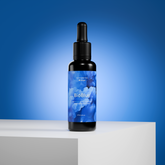Cancer
How does RLT help?
Possible ways in which RLT has an impact on the disease state are through modulation of inflammation, ulceration, pain, edema, fibrosis, and muscular and neurological injury.
potential applications of RLT for management of cancer-related conditions include xerostomia, dysgeusia, radiodermatitis, post-RT fibrosis, chronic oral graft-versus-host disease and breast cancer-related lymphedema has been reported.

Tell me more...
Since 1967, the number of clinical applications of light therapy has increased steadily in multiple medical fields, and in recent years red light therapy (RLT) has been widely used for supportive care of cancer patients.
The best-studied cancer therapy-related complication, for which RLT is recommended, is oral mucositis (OM). RLT also has beneficial effects in the management of soft tissue necrosis in patients with head and neck cancer (HNC), and therapy-induced bone necrosis. For more than 20 years, RLT has been used in the management of OM and in HNC patients and no significant adverse effects have been documented.
A suitable dose of RLT can slow down tumor growth and prolong the lifespan of mice. The immunoglobulin activity (IgA, IgM, and IgG) in 60 oncologic patients can be increased with RLT in the tumoral area or lymph nodes. Recently, RLT has been used for managing chemoradiotherapy in head and neck cancer patients. RLT with adequate radiation time can induce apoptosis in human lung adenocarcinoma cells in cell culture. Therefore, a suitable RLT therapy can be used to treat cancer.
It is key to understand the effect of different RLT parameters (wavelength, fluence, energy, and time) and experimental models before applying and evaluating RLT correctly. This is due to a clear contrast between in vivo and human studies versus in vitro cell culture studies, related to the tumor microenvironment.
The benefits of the use of RLT and levels of theoretical risk should be considered for the best patient care. In the opinion of a 2020 systematic review: current evidence supports the use of RLT in accepted indications.
Future research should be conducted to better define optimal RLT parameters for each of the complications of cancer treatment. In addition, the ideal timing (i.e., prophylactic vs. therapeutic) and frequency of RLT administration should be determined, as well as how long RLT should be continued after the completion of cancer treatment.

What does the research show?
“While additional clinical trials and follow-up are desirable, the current evidence supports the safety of PBM in the established protocols through consensus guidelines in the management of cancer therapy-related side effects.“ (1)
“Side-effects induced by cancer therapy have a detrimental effect on the patient's well-being and may delay or even prevent the patients from completing treatment regimens. PBM is already an established tool for supportive treatment in cancer patients. The advent of a self-applied personal PBM treatment with easy-to-apply protocols for a variety of side-effects makes this technology an important accessible and safe supportive care option.” (2)
(Regarding oral mucositis): “Results showed that PBM-treated patients had improved loco-regional disease control, and a better progression-free and overall survival.” (3)
“Photobiomodulation for oral mucositis reduced weight loss and prevented a reduction in BMI in patients who underwent chemoradiotherapy for head and neck cancer.” (4)
“The results of studies consistently show that PBM can reduce melanoma cell viability. In vivo studies demonstrated that PBM also could inhibit the proliferation of melanoma cells in animal models.” (5)
“PBMT might be an effective treatment strategy to manage cancer-induced peripheral neuropathy, with very encouraging reports from renowned teams, but evidence is limited. More methodologically uniform research (mainly regarding the parameters of PBMT) is needed to support the use of PBMT for this indication.” (6)
**While the current scientific research seems to indicate many positive benefits of RLT in relation to fat loss, there is still an appreciable necessity for more extensive research to be conducted in this area, including double-blind RCT (randomized controlled trials), to provide a more comprehensive, robust overview that will further elucidate the optimal parameters and appropriate uses of RLT, which will ultimately lead the most safe and efficacious uses for cancer.
Citations
(1) Bensadoun, René-Jean et al. “Safety and efficacy of photobiomodulation therapy in oncology: A systematic review.” Cancer medicine vol. 9,22 (2020): 8279-8300. doi:10.1002/cam4.3582
(2) Gavish, Lilach et al. “Supportive care of cancer patients with a self-applied photobiomodulation device: a case series.” Supportive care in cancer : official journal of the Multinational Association of Supportive Care in Cancer vol. 29,8 (2021): 4743-4749. doi:10.1007/s00520-021-06027-w
(3) Bensadoun, René-Jean et al. “Safety and efficacy of photobiomodulation therapy in oncology: A systematic review.” Cancer medicine vol. 9,22 (2020): 8279-8300. doi:10.1002/cam4.3582
(4) de Sousa Melo, Amanda et al. “Impact of photobiomodulation for oral mucositis on body weight and BMI of patients with head and neck cancer.” Supportive care in cancer : official journal of the Multinational Association of Supportive Care in Cancer vol. 30,6 (2022): 4897-4904. doi:10.1007/s00520-022-06899-6
(5) Chen, Zeqing et al. “The review of the light parameters and mechanisms of Photobiomodulation on melanoma cells.” Photodermatology, photoimmunology & photomedicine vol. 38,1 (2022): 3-11. doi:10.1111/phpp.12715
(6) Lodewijckx, Joy et al. “Photobiomodulation Therapy for the Management of Chemotherapy-Induced Peripheral Neuropathy: An Overview.” Photobiomodulation, photomedicine, and laser surgery vol. 38,6 (2020): 348-354. doi:10.1089/photob.2019.4771







